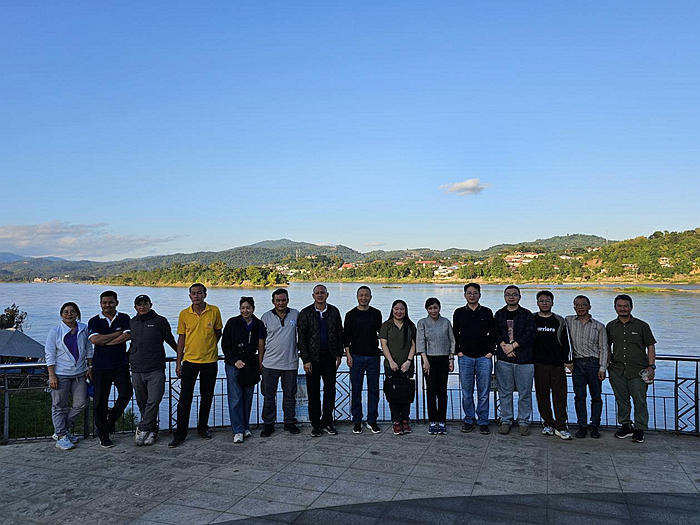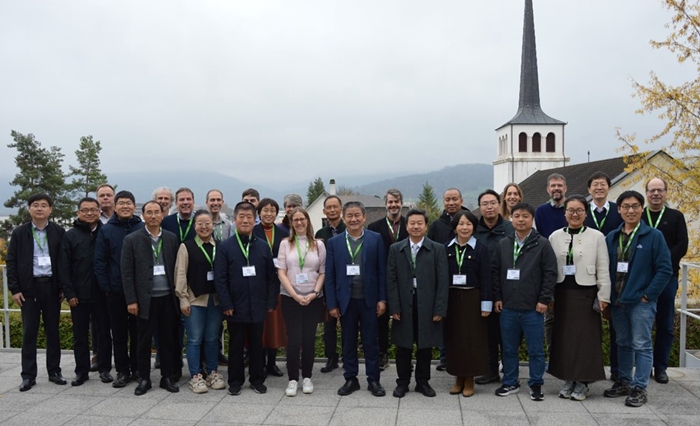Advances in Developing Genomic Selection Software from Institute of Tobacco Research
Recently, the collaborative research by Dr. Yanjun Zan’s team from Institute of Tobacco Research (ITR), Chinese Academy of Agricultural Sciences (CAAS) and Professor Tao Zhao’s team from Northwest A&F University (NWAFU) made significant progress in developing genomic selection software. The related findings have been published in Frontiers in Plant Science .
Genomic selection (GS) has been widely applied in animal and plant breeding, significantly improving the genetic gains of numerous crops and animals. To enhance prediction accuracy and computational efficiency, statistical geneticists have developed a large number of computational biology methods, including linear models, linear mixed models based on likelihood theory, Bayesian linear mixed models, kernel-based linear mixed models, machine learning models, and deep learning models. However, applying these models in breeding presents considerable challenges.
Firstly, using these models often requires advanced R programming skills and command-line tools for tasks such as data quality control, input file formatting, and dependency installation. These requirements can pose significant barriers for breeders. Secondly, prediction accuracy and computational resource demands vary significantly across models for different genetic populations and traits. Currently, there is a lack of comprehensive guidelines for selecting appropriate models.
To address these challenges, the researchers developed ShinyGS, a graphical user interface software that integrates almost all currently available genomic selection models. ShinyGS incorporates 16 mainstream genomic prediction models, including:
· Linear regression-based models: Ridge regression (RR), least absolute shrinkage and selection operator (LASSO), elastic net (EN).
· Linear mixed models: Genomic best linear unbiased prediction (G-BLUP), ridge regression best linear unbiased prediction (rrBLUP).
· Bayesian linear regression models: Bayesian LASSO (BL), Bayes A (BA), Bayes B (BB), Bayes C (BC), Bayesian ridge regression (BRR).
· Kernel-based models: Dominance mixed model, multi-kernel reproducing kernel Hilbert space (MKRKHS), reproducing kernel Hilbert space (RKHS).
· Machine learning models: Gradient boosting machine (GBM), random forest (RF), supports vector machine (SVM).
· Deep learning model: Deep neural network genomic prediction (DNNGP).
Given the differences in capturing minor polygenic effects, additive effects, and non-additive effects, the team conducted comparative analyses across multiple populations (e.g., multi-parent hybrid populations, germplasm resources, and inbred lines) and traits (e.g., flowering time, yield, and growth-related traits).
The results indicated that Bayesian models generally had lower prediction accuracy and their computational resource demands increased significantly with larger populations, making them less suitable for future breeding applications. Conversely, models such as rrBLUP, MKRKHS, GBM, and DNNGP performed relatively better across various populations and traits, with acceptable computational resource demands. These models are recommended for focused use by breeders.
ShinyGS is freely available to non-commercial users on Docker Hub (https://hub.docker.com/r/yfd2/ags). This toolkit greatly simplifies the application of genomic prediction, making advanced genomic selection methods more accessible and beneficial to breeders.
The research was supported by the National Natural Science Foundation of China (NSFC) Youth Program, National Key Research and Development Program Young Scientists Project, Shandong Taishan Scholar Talent Project, Shandong Overseas Outstanding Young Scientist Fund, CAAS Science and Technology Innovation Program, and Tobacco Research Institute.
Link to the paper:
https://www.frontiersin.org/journals/plant-science/articles/10.3389/fpls.2024.1480902/full

(By Yanjun Zan, zanyanjun@caas.cn)
-
 Jan 21, 2025IAED-CAAS Delegation Visits Thailand for Scientific Cooperation
Jan 21, 2025IAED-CAAS Delegation Visits Thailand for Scientific Cooperation -
 Dec 12, 2024Chinese Academy of Agricultural Sciences (CAAS) is launching the NARS Capacity Building through China-Africa Research Partnership Program
Dec 12, 2024Chinese Academy of Agricultural Sciences (CAAS) is launching the NARS Capacity Building through China-Africa Research Partnership Program -
 Dec 05, 2024China-CABI Project Development Workshop Held in Delémont, Switzerland
Dec 05, 2024China-CABI Project Development Workshop Held in Delémont, Switzerland -
 Dec 05, 2024Ministerial Workshop on Digital Agriculture and Rural Revitalization for BRI Partner Countries Held at CAAS
Dec 05, 2024Ministerial Workshop on Digital Agriculture and Rural Revitalization for BRI Partner Countries Held at CAAS -
 Dec 05, 2024CIAR and FGV Deepen Cooperation to Promote the Development of China-Brazil Green Agricultural Products Value Chain
Dec 05, 2024CIAR and FGV Deepen Cooperation to Promote the Development of China-Brazil Green Agricultural Products Value Chain
